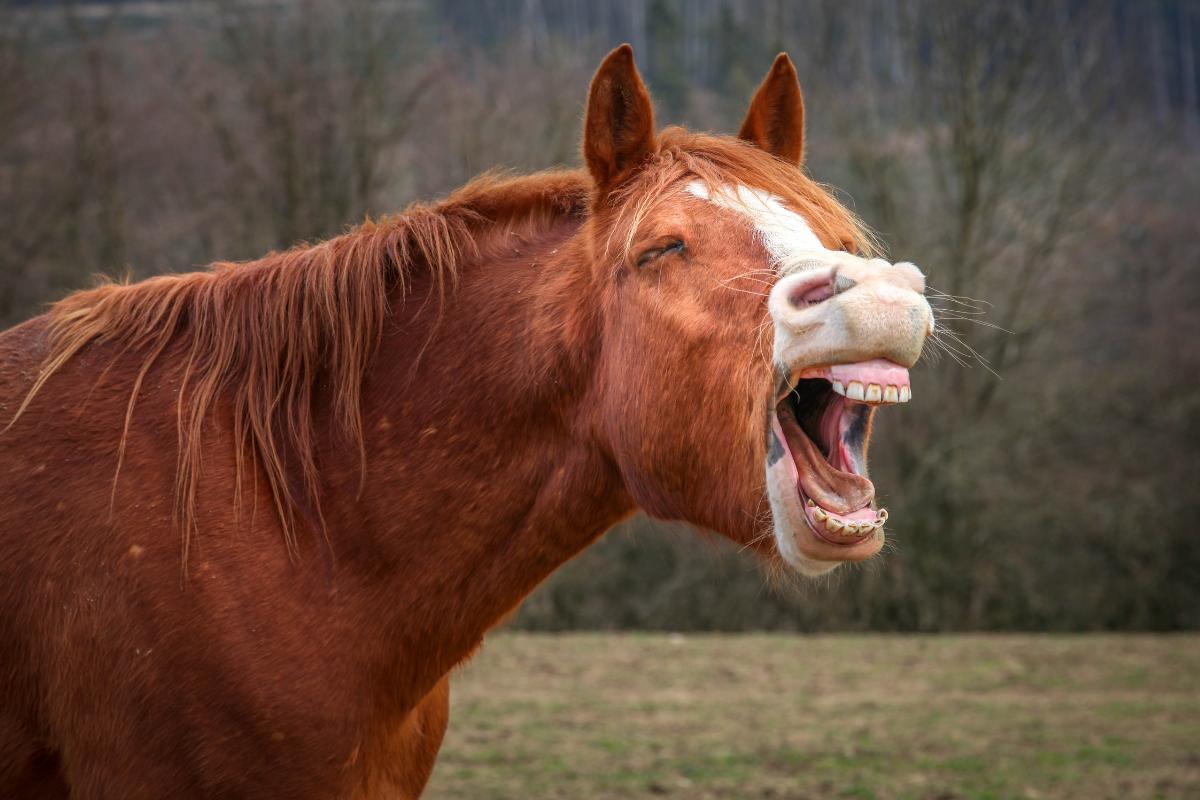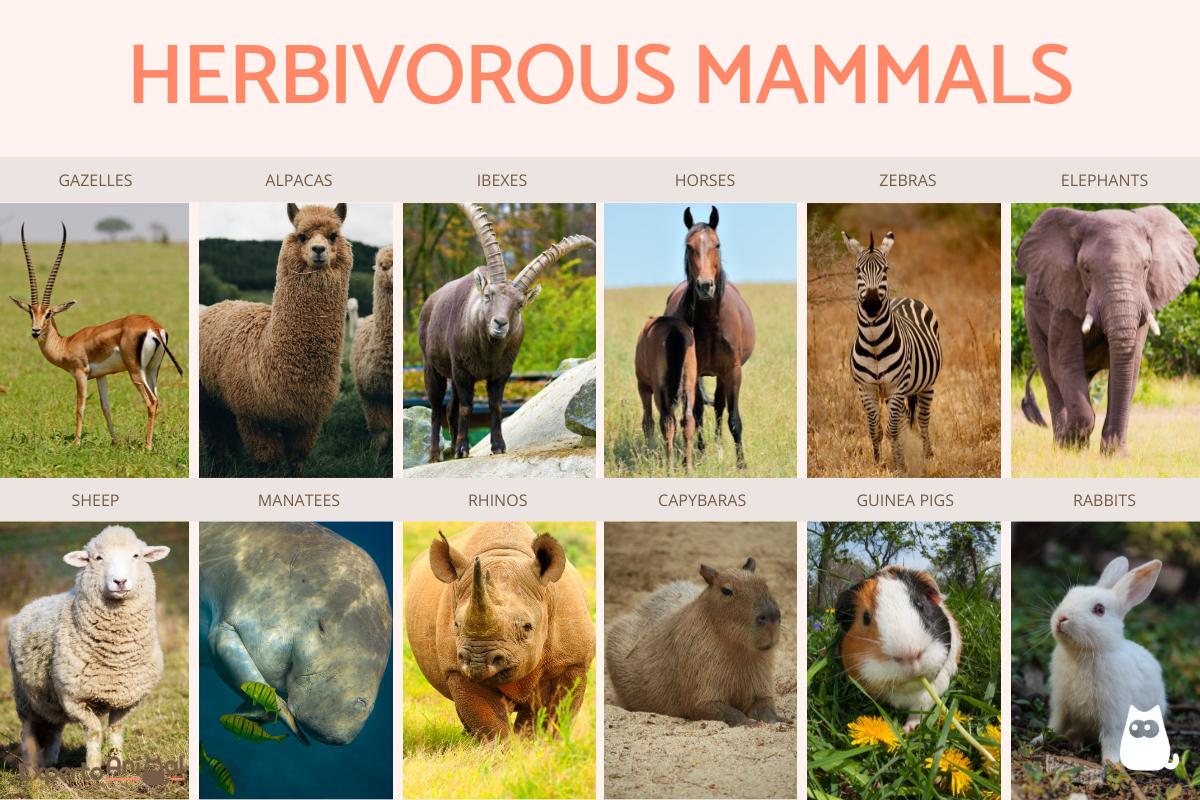Herbivorous Mammals - Definition and Types


Herbivorous mammals are those which do not eat animal protein to survive, essentially only eating organisms that use photosynthesis to feed. Despite this common characteristic, the biodiversity of different types of herbivorous animals is great. They range from some of the largest land animals in the world, to some of the smallest. For this reason, there are also different ways of categorizing herbivore mammals. They have many different characteristics, not all of which are related to diet. These characteristics exist thanks to the adaptations these species have undergone during their evolutionary processes.
At AnimalWised, we look at herbivorous mammals more closely by providing a definition and types with examples. We also see photos of the different herbivore mammal species.
What are herbivorous mammals?
To understand the definition of herbivorous mammals, it is necessary to define both mammals and herbivores in general. Mammalian animals are those that are characterized by certain features, including mammary glands which allows them to feed their young. They are also characterized by having hair and their fetal development occurs inside the maternal womb, although there is a very small group of mammals that lay eggs.
Herbivores are any type of animal that base their diet solely on the consumption of plant matter. For this reason, herbivorous mammals are defined as all animals with mammary glands and a strictly plant-based diet. Such a diet may include leaves, stems, roots, flowers, fruits, seeds, nectar or sap. Some animals mainly consume plants, but also include animals in their diet. These are considered to be omnivorous animals .
There are very specialized herbivorous mammals in terms of the type of plant matter they eat. For example, some are folivorous mammals, meaning they are adapted to consuming the leaves of a particular plant almost exclusively. We also find herbivorous mammals that not only feed on a variety of vegetation, but on different parts of plants.
An important aspect to highlight about herbivorous mammals is how their specialized diet is so closely linked to their ecosystems. Animals that require plant vegetation to survive are more susceptible to deforestation since it removes their only source of food and directly threatens the species.
Learn more background with our general guide to types of herbivorous animals.

Classification of herbivorous mammals
All the types of carnivorous animals are grouped taxonomically in the order Carnivora. Herbivores do not constitute a taxonomic order in themselves, so they are categorized in various groups of mammals. In this sense, we can classify herbivorous mammals based on two aspects. The first is their their anatomical and physiological characteristics of the digestive system which are essential to process food. The second is according to what food they eat.
Anatomical and physiological characteristics of herbivorous animals
Depending on the anatomical and physiological characteristics of the digestive system, we find two groups of herbivorous mammals:
- Monogastric herbivorous mammals: these animals have a stomach that is not divided into chambers or compartments. Although they digest vegetable fibers less efficiently, they manage to adequately obtain essential nutrients such as proteins, carbohydrates and fatty acids with increased consumption. Chewing and fermentation are essential in their diet.
- Polygastric herbivorous mammals: these types of herbivorous mammals are known as ruminant animals (such as the cattle depicted in the photo above). They have a stomach that is divided into compartments. They digest vegetable fibers more efficiently due to their complex way of processing food material. In addition to chewing, the presence of bacteria and protozoa ferment the food in a complex way, a process essential in the digestion process.
Depending on the type of food
Depending on the specific type of diet, we distinguish the following types of herbivorous mammals:
- Browsing mammals: their diet is based mainly on woody plants, such as shrubs.
- Grazing mammals: they feed mainly on herbaceous plants such as grass.
- Folivorous mammals: exclusively eat leaves.
- Granivorous mammals: their main diet is based on seeds and grains.
- Frugivorous mammals: they eat various fruits as their main source of nutrition.
Learn more about animals that eat seeds with our guide to the different types of granivorous animals.
Characteristics of herbivorous mammals
The physical characteristics of herbivorous mammals are closely related to their diet. This result in different eating habits and anatomical traits depending on what food the animal eats. In this sense, we find differences in the way of searching for, obtaining, chewing and processing food, not only in herbivorous mammals, but also in all other animals.
Because there are different types of herbivorous mammals, there are varied physical traits adapted to the food they eat. However, we can highlight the following as the main characteristics:
- In general, they do not have canine teeth.
- The molars are broad and adapted for grinding vegetable matter.
- In herbivorous mammals such as rodents, the incisors are constantly growing.
- They do not have enzymes to break down the glucose molecules that make up cellulose. However, they have bacteria and protozoa capable of fulfilling this important function.
- In some herbivorous mammals, the digestive system structure known as the cecum is well developed, in which fermentation and absorption occur.
- Some herbivorous mammals carry out coprophagy which consists of consuming their feces to ferment the food again and take in the maximum of nutrients. An example of this is found in rabbits which eat their own poop.
- A group of herbivorous mammals are monogastric, i.w. they have stomachs without compartments. There is also another group of herbivorous mammals with complex stomachs made up of chambers where food goes through a series of steps for processing.
- In general, they tend to have large and long digestive systems.
- They commonly ingest large amounts of food .

Types and examples of herbivorous mammals
Among herbivorous mammals we find various types and examples depending on the group to which they belong. We share a list with the types of herbivorous mammals and specific examples of each group, as well as photos below of some representative species:
- Bovids: are polygastric and some representative examples include cattle, wildebeests, gazelles, zebus and buffaloes, among others. Learn more about cattle with our article on the difference between an ox and a bull.
- Camelids: they are also polygastric and include the different species of camels, llamas and alpacas as the best known.
- Goats: they are polygastric and include animals such as goats and ibexes.
- Deer: some examples of these herbivorous mammals are elk, reindeer, red deer, and caribou, also being polygastric. Learn more with our article on the different types of deer.
- Equidae: they are monogastric and include donkeys, horses and zebras.
- Elephantids: contains monogastric animals known as elephants, the largest extant land mammals.
- Sheep: some examples of these polygastric herbivorous mammals are sheep, mouflons and rams.
- Sirenia: here we have aquatic herbivorous mammals such as the dugong and manatee.
- Rhinoceros: only contain rhinos which have monogastric stomachs.
- Rodents: many rodents are herbivorous mammals, such as guinea pigs, capybaras, hamsters, squirrels, and porcupines, but not all.
- Lagomorphs: they are monogastric and the most representative animals are rabbits and hares. Not all species of hares are herbivorous.
Now you know about herbivorous animals, you may want to discover more about other animals which are herbivores. You can do so with our list of herbivorous animals and which reptiles are herbivorous?

If you want to read similar articles to Herbivorous Mammals - Definition and Types, we recommend you visit our Facts about the animal kingdom category.
- Hickman, C., Roberts, L., & Parson, A. (2000). Comprehensive principles of zoology. McGraw Hill Inter-American: Spain.
- Smith, T., & Smith, R. (2007). Ecology. Editorial Pearson Education: Spain.








